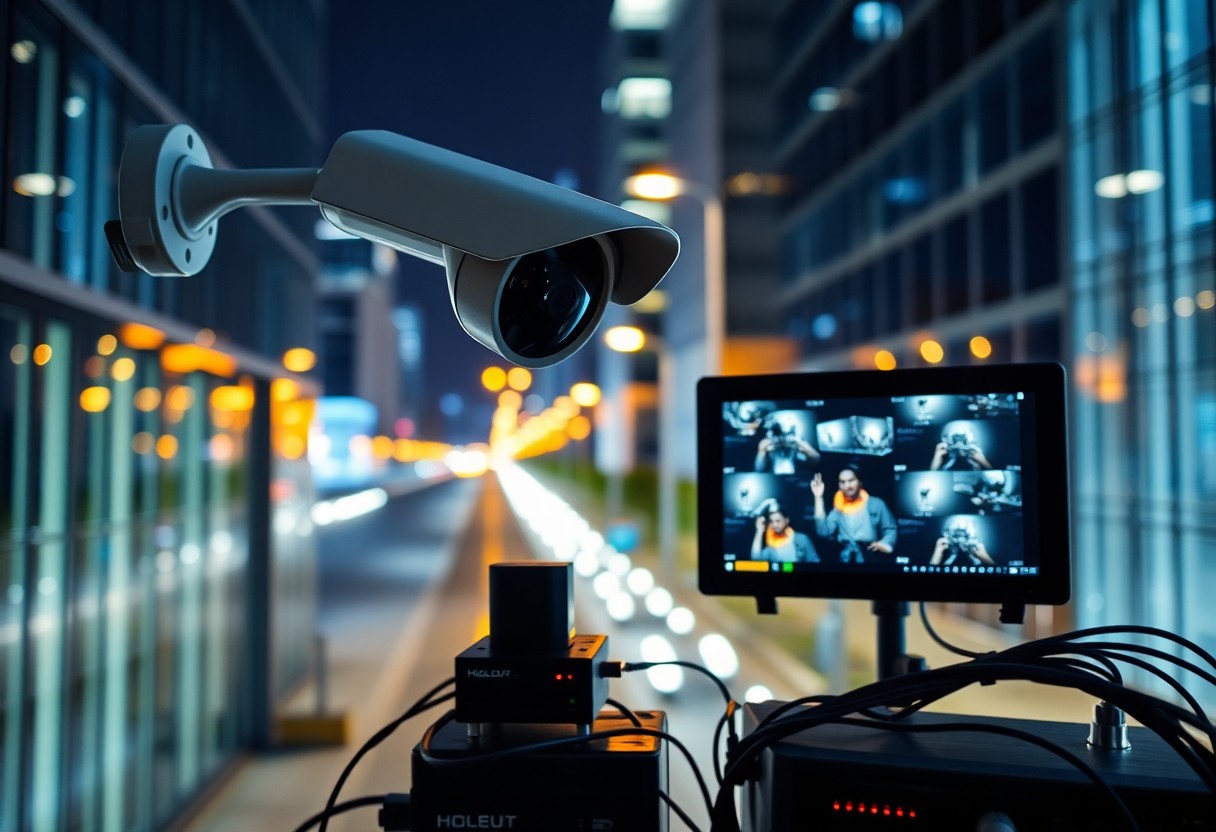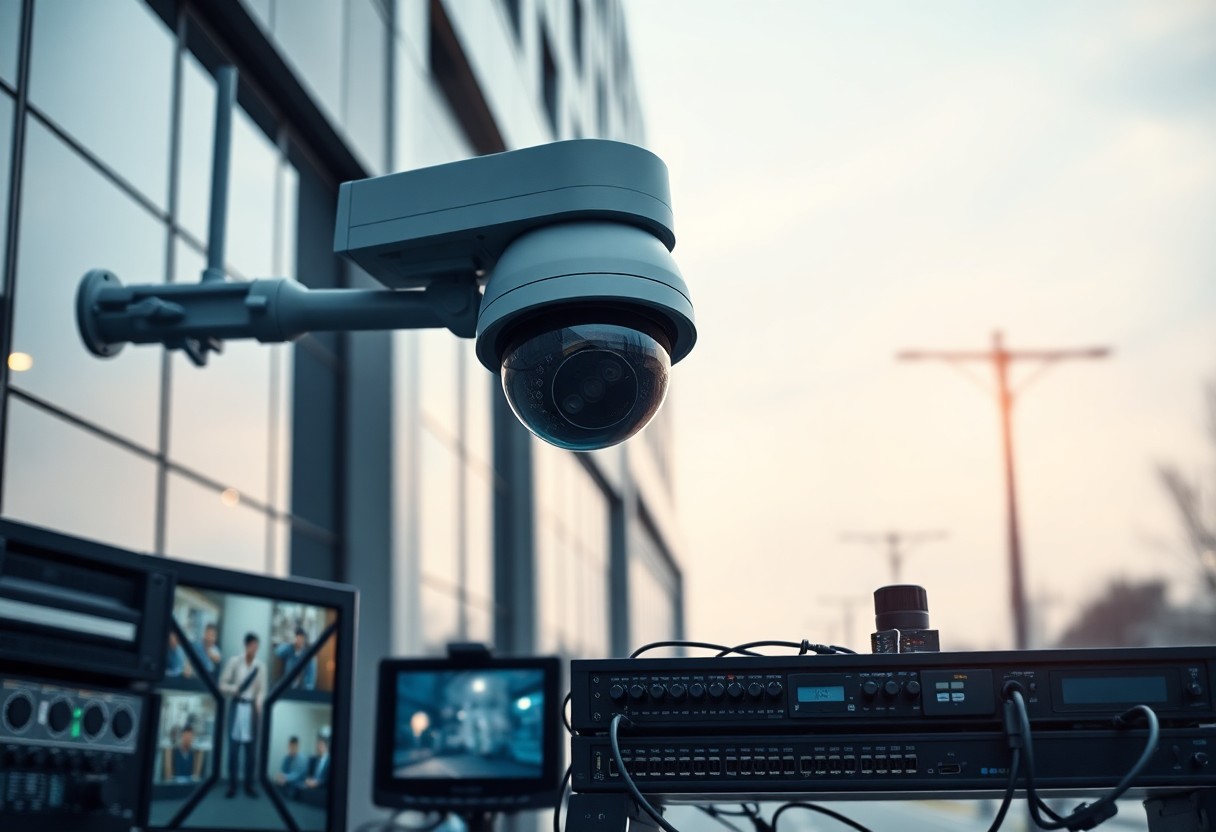This guide will empower you to enhance the performance of your security cameras, ensuring they provide maximum surveillance efficiency. You’ll discover imperative tips for optimizing resolution, placement, and connectivity, enabling you to achieve the best possible results from your security system. By applying these proven strategies, your cameras will capture clearer images, adapt better to varying light conditions, and ultimately give you peace of mind knowing your property is well-monitored.
Contents
- Understanding Security Camera Features
- Types of Security Cameras
- Key Specifications to Consider
- How to Choose the Right Location
- Factors Affecting Camera Placement
- Tips for Optimal Coverage
- How to Optimize Camera Settings
- Adjusting Resolution and Frame Rate
- Fine-Tuning Night Vision and Motion Detection
- How to Ensure Reliable Connectivity
- Wired vs. Wireless Considerations
- Enhancing Wi-Fi Signal and Stability
- How to Maintain and Care for Security Cameras
- Regular Cleaning and Inspection Tips
- Updates and Firmware Maintenance
- How to Utilize Additional Features
- Integration with Smart Home Systems
- Utilizing Cloud Storage Solutions
- Conclusion
Understanding Security Camera Features
Before selecting a security camera, it’s vital to understand its features thoroughly. By familiarizing yourself with the various functions available, you can make informed choices to enhance your security setup and ensure that your investments serve your needs effectively.
Types of Security Cameras
Before purchasing, you should explore the available types of security cameras, which may include:
- Dome Cameras
- Bullet Cameras
- PTZ (Pan-Tilt-Zoom) Cameras
- Wireless Cameras
- IP Cameras
The best option for you will depend on the specific requirements of your property and the areas you wish to monitor.
You should also consider key specifications when purchasing security cameras. These specifications can significantly impact their performance and effectiveness in monitoring your property.
Key Specifications to Consider
With a keen eye on key specifications, you can ensure your security camera meets all necessary requirements. Some vital aspects to look out for include resolution, field of view, night vision capabilities, and storage options.
Understanding the key specifications of a security camera will empower you to choose a device that suits your surveillance needs. Evaluating features such as resolution gives you clearer images, while a wide field of view ensures better coverage of your property. Efficient night vision enables monitoring in low-light conditions, and adequate storage options allow for extended footage retention. All these factors influence the camera’s overall performance and your security effectiveness.
How to Choose the Right Location
There’s no single best spot for your security camera; the right location depends on your property layout and security needs. Start by evaluating the areas you wish to monitor, such as entrances, driveways, or blind spots where intruders might enter. Be mindful of potential obstructions and ensure the camera has a clear line of sight to capture high-quality footage.
Factors Affecting Camera Placement
On determining where to place your camera, consider several factors that can significantly affect its effectiveness:
- Lighting conditions
- Height of the installation
- Field of view
- Potential obstructions (trees, fog, etc.)
- Access to power sources
- Environmental conditions (e.g., rain, wind)
The right combination of these factors will enhance your camera’s ability to capture clear and reliable footage.
Tips for Optimal Coverage
An effective security system hinges on strategic placement to ensure the maximum area is monitored:
- Position cameras high to reduce tampering
- Cover entry points like doors and windows
- Utilize multiple cameras to eliminate blind spots
- Consider the camera’s view angle and adjust accordingly
After implementing these strategies, regularly review camera placements to adapt to changes in your property or security needs.
Camera placement influences overall visibility and effectiveness. To achieve optimal coverage, ensure each camera provides diverse angles and overlaps with others’ fields of view. This minimizes the risk of blind spots and maximizes protection around your property. Check the placement during different times of the day to adjust for changing lighting conditions or obstructions. After establishing these best practices, you’ll create a robust security network that instills confidence in its ability to capture any unusual activity.
How to Optimize Camera Settings
Now that you understand the importance of camera settings, it’s time to make adjustments for optimal performance. Pay attention to factors like resolution and frame rate to ensure your security footage is clear and effective. For more insights, check out The One Best Thing You’re Not Doing For Your Security ….
Adjusting Resolution and Frame Rate
The resolution and frame rate you choose for your security cameras can significantly impact the quality of your surveillance footage. Higher resolution captures more detail, while adjusting the frame rate helps balance video quality with storage space. Fine-tuning these settings based on your specific needs will enhance your overall security system.
Fine-Tuning Night Vision and Motion Detection
If you want to improve your camera’s performance in low-light conditions, fine-tuning night vision and motion detection settings is vital. These features can help your camera capture clear images during the night and reduce false alerts from non-threatening movements.
Rate adjustments in night vision modes allow your camera to detect light more effectively, enhancing image clarity. Additionally, modifying the motion detection sensitivity can help prevent unnecessary alerts from moving foliage or pets. By optimizing these settings, you can ensure that your security cameras perform efficiently around the clock, providing you with peace of mind.
How to Ensure Reliable Connectivity
Unlike traditional security systems, modern cameras rely heavily on stable connectivity for optimal performance. Ensuring that your security camera maintains a reliable connection protects against interruptions that could compromise your surveillance. This includes setting up your devices in optimal locations, regularly monitoring their status, and potentially upgrading network components to support consistent connectivity.
Wired vs. Wireless Considerations
Now, when deciding between wired and wireless security cameras, you should consider various factors such as installation ease, location flexibility, and reliability. Wired cameras often provide a steady connection with less susceptibility to interference, while wireless cameras offer the convenience of placement without the need for extensive cabling. Assess your specific surveillance needs to determine which option suits your environment best.
Enhancing Wi-Fi Signal and Stability
Signal strength is fundamental to the performance of wireless security cameras. To enhance your camera’s Wi-Fi signal and overall stability, position your router strategically, minimize physical obstructions, and consider using range extenders or mesh networks for larger areas. Regularly updating your router’s firmware can also improve performance and security.
Considerations for enhancing your Wi-Fi signal aren’t limited to hardware placement. You should also evaluate potential sources of interference, such as microwaves, cordless phones, or other wireless devices that share the same frequency. Changing your router’s channel or using the 5GHz band can lead to a less congested network, providing your security cameras with a more stable and reliable connection, ultimately ensuring your surveillance system performs efficiently.

How to Maintain and Care for Security Cameras
Many people overlook the importance of regular maintenance for their security cameras. By ensuring optimal performance through proper care, you can enhance their effectiveness and longevity. This includes cleaning, inspecting, and updating your security systems regularly to guarantee they are functioning at their best.
Regular Cleaning and Inspection Tips
While it’s easy to forget about the upkeep of your security cameras, consistent cleaning and inspection will keep them operational. Follow these tips:
- Wipe cameras with a soft, lint-free cloth.
- Check for obstructions in the camera’s view.
- Inspect cables and connections for wear.
- Remove any debris that accumulates on the lens.
This ensures that your cameras provide optimal surveillance capabilities.
Updates and Firmware Maintenance
Care for your security cameras by keeping their firmware and software updated. Regular updates fix vulnerabilities and enhance functionality, ensuring your cameras remain secure and efficient.
Maintain your security camera system by setting a reminder to check for updates every few months. Most manufacturers will notify you when a new firmware version is available. Downloading and installing these updates will not only patch any security holes but also introduce new features that can optimize your camera performance. Neglecting updates might lead to performance issues or security risks, so proactive maintenance is key.

How to Utilize Additional Features
After you have set up your security cameras, it’s time to explore additional features that can enhance their performance. Many modern cameras come with a variety of functionalities such as motion detection, alerts, and two-way audio. By maximizing these features, you can create a more comprehensive security system tailored to your specific needs.
Integration with Smart Home Systems
To achieve greater functionality, consider integrating your security cameras with your smart home systems. This can include connecting your cameras to smart hubs, voice assistants, or other security devices. By doing so, you can streamline your monitoring and automate alerts, making your home security system more efficient and user-friendly.
Utilizing Cloud Storage Solutions
An effective way to enhance your security camera system is by utilizing cloud storage solutions. This allows you to store your video footage remotely, freeing up space on local devices and ensuring your data is secure even if your physical equipment is compromised.
Features of cloud storage solutions provide you with flexible access to your footage from anywhere, at any time. You can easily retrieve and review past recordings without the worry of losing information through hardware failure. Additionally, many cloud services offer advanced options like automatic backups and enhanced encryption, which further protect your valuable security footage and grant you peace of mind.
Conclusion
Summing up, optimizing your security camera performance involves a combination of strategic placement, regular maintenance, and utilizing the latest technology. By ensuring your cameras are positioned effectively, maintaining clean lenses, and updating software regularly, you enhance their functionality and reliability. Additionally, taking advantage of advanced features like motion detection and remote viewing can provide you with greater peace of mind. By following these tips, you can significantly improve the effectiveness of your surveillance system, ensuring your property remains secure.

Leave a Reply